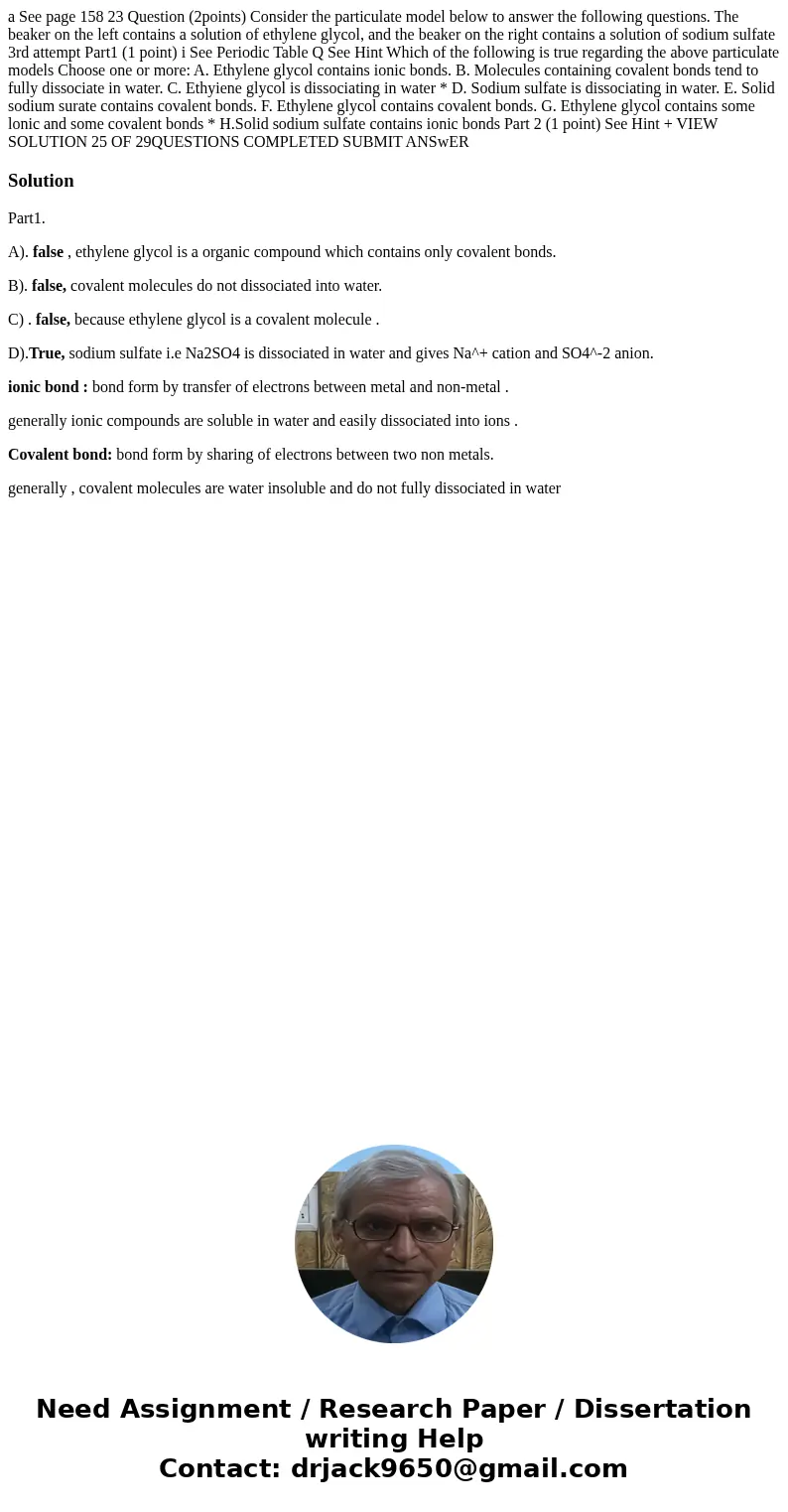a See page 158 23 Question 2points Consider the particulate
a See page 158 23 Question (2points) Consider the particulate model below to answer the following questions. The beaker on the left contains a solution of ethylene glycol, and the beaker on the right contains a solution of sodium sulfate 3rd attempt Part1 (1 point) i See Periodic Table Q See Hint Which of the following is true regarding the above particulate models Choose one or more: A. Ethylene glycol contains ionic bonds. B. Molecules containing covalent bonds tend to fully dissociate in water. C. Ethyiene glycol is dissociating in water * D. Sodium sulfate is dissociating in water. E. Solid sodium surate contains covalent bonds. F. Ethylene glycol contains covalent bonds. G. Ethylene glycol contains some lonic and some covalent bonds * H.Solid sodium sulfate contains ionic bonds Part 2 (1 point) See Hint + VIEW SOLUTION 25 OF 29QUESTIONS COMPLETED SUBMIT ANSwER 
Solution
Part1.
A). false , ethylene glycol is a organic compound which contains only covalent bonds.
B). false, covalent molecules do not dissociated into water.
C) . false, because ethylene glycol is a covalent molecule .
D).True, sodium sulfate i.e Na2SO4 is dissociated in water and gives Na^+ cation and SO4^-2 anion.
ionic bond : bond form by transfer of electrons between metal and non-metal .
generally ionic compounds are soluble in water and easily dissociated into ions .
Covalent bond: bond form by sharing of electrons between two non metals.
generally , covalent molecules are water insoluble and do not fully dissociated in water

 Homework Sourse
Homework Sourse